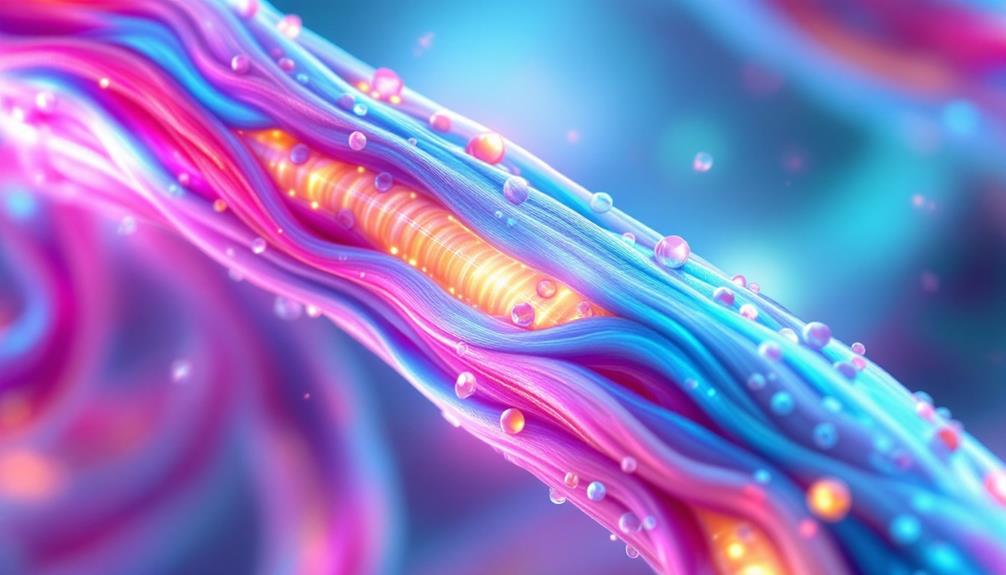Muscle force is the strength your muscles produce during contraction, vital for every movement from lifting weights to running. It starts when motor neurons send signals from your brain. This stimulates calcium release in your muscles, allowing myosin to pull actin, resulting in contraction. Your muscle fibers, including slow-twitch for endurance and fast-twitch for explosive power, play an essential role in this process. ATP provides the energy required for both contraction and relaxation. Factors like training, health, and hydration can affect your muscle force. If you're curious about enhancing your strength or performance, keep exploring these concepts further.
Core Insight
- Muscle force is the strength produced during muscle contraction, enabling movement and various physical activities.
- Contraction is triggered by brain signals through motor neurons, releasing calcium ions from the sarcoplasmic reticulum.
- Myosin heads attach to actin filaments, forming cross-bridges that pull actin, shortening the muscle.
- ATP provides the energy necessary for muscle contraction and relaxation by facilitating actin-myosin interactions.
- Factors like muscle fiber types, training, and hydration impact the efficiency and capacity of muscle force generation.
Definition of Muscle Force
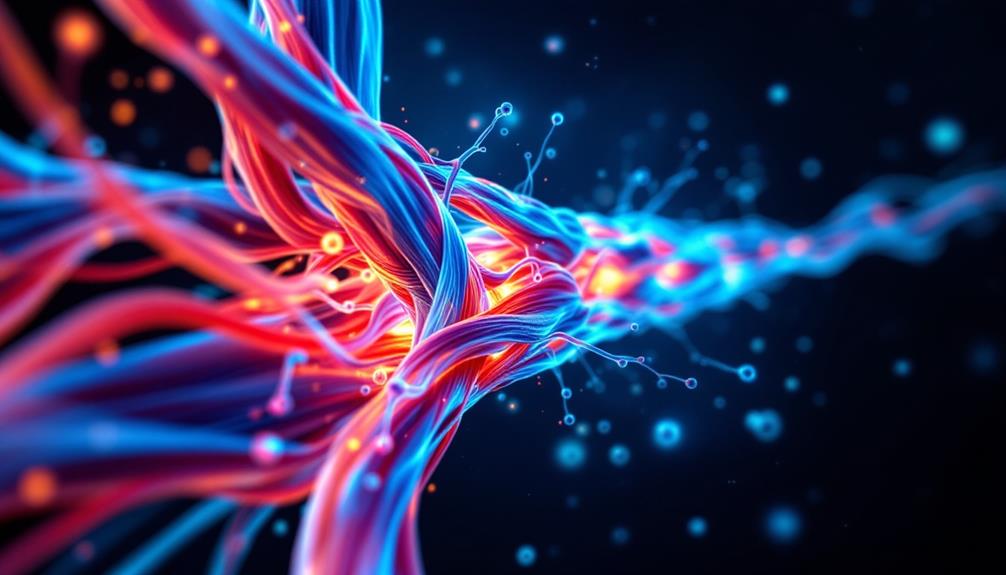
What is muscle force? Muscle force is the strength your muscles create when they contract. This force allows you to perform actions like lifting weights, running, or simply standing up. When you want to move, your brain sends signals to your muscles to contract. This contraction pulls on your bones, causing movement.
Muscle force is important for everyday tasks, from walking to typing. Several factors affect it, including the type of muscle fibers you have, your training, and your overall health. Understanding muscle force helps you see how your body works and how you can improve your strength and performance. Using compression sleeves can help enhance muscle performance and recovery by providing support to specific areas. In summary, muscle force is the power behind everything you do.
Key Components of Muscle Contraction
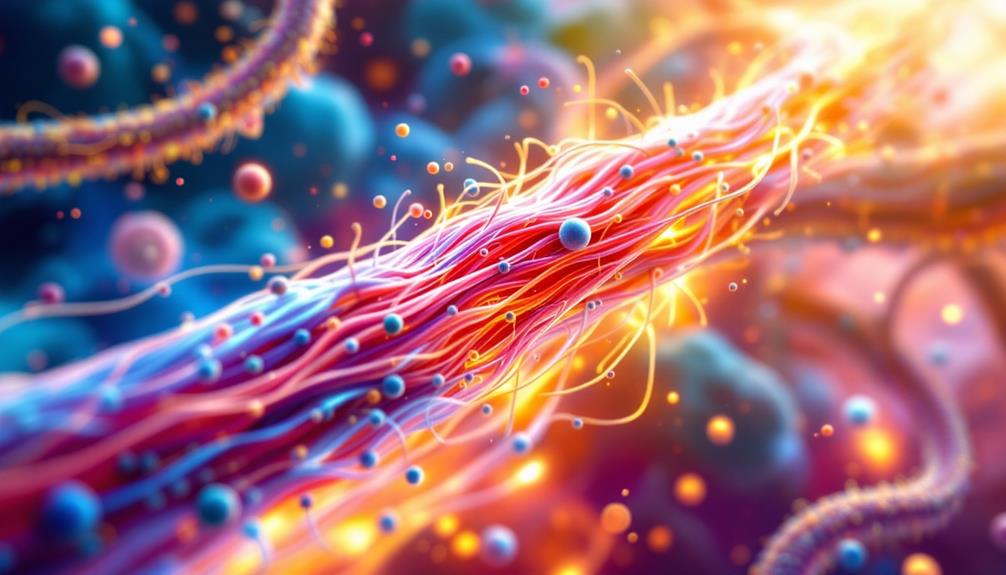
Muscle contraction involves several important parts that work together smoothly. First, motor neurons carry signals from the brain to the muscles. This action causes the release of calcium ions from a storage area called the sarcoplasmic reticulum. Calcium then attaches to a protein called troponin, which moves another protein, tropomyosin, away from the actin filaments. This process can be compared to how certain materials activate cooling towels, but it happens on a tiny scale within your muscles.
After that, myosin heads connect to the actin filaments, forming cross-bridges. When ATP is broken down, myosin pulls actin toward the center of the sarcomere, which shortens the muscle. This entire action is known as the sliding filament theory.
Types of Muscle Fibers

Different types of muscle fibers are important for how your body performs different activities. The three main types are slow-twitch, fast-twitch, and intermediate fibers. Understanding these muscle fiber types can help you get the most out of your workouts.
Slow-twitch fibers, also known as Type I fibers, are good for endurance. They use oxygen well, making them great for activities like long-distance running. Fast-twitch fibers, or Type II fibers, are split into Type IIa and Type IIb. Type IIa fibers are more resistant to fatigue and can help with both strength and endurance. Type IIb fibers create quick bursts of power but tire out quickly, making them ideal for sprinting or lifting heavy weights.
Knowing about these muscle fiber types can help you plan your workouts, whether you want to improve endurance, build strength, or increase speed. Each type plays a unique role in your overall performance.
Mechanism of Muscle Contraction
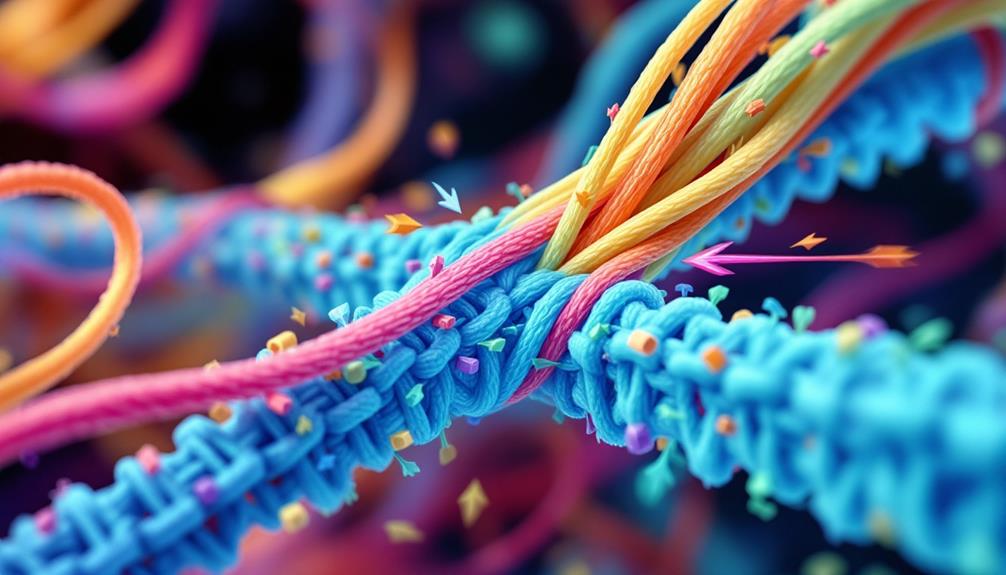
Understanding how your body moves is important, and muscle contraction is a key part of that process. Muscle contraction happens through something called the sliding filament theory. This means muscle fibers shorten to create force. Here's a simple breakdown of how it works:
- Nerve Signal: Your nervous system sends a signal that tells your muscles to contract.
- Calcium Release: Calcium ions are released from a part of the muscle called the sarcoplasmic reticulum, starting the contraction.
- Cross-Bridge Formation: Myosin heads attach to actin filaments, creating connections called cross-bridges.
- Sliding Action: Myosin pulls the actin filaments, which makes the muscle shorten and generate force.
This process happens quickly, allowing for smooth and coordinated movements. It helps you perform many activities easily. Knowing how this works helps you appreciate how complex your body's movements are. Staying hydrated and eating well, including having post-workout recovery drinks, is important for supporting your muscles and helping them recover after intense exercise.
Role of ATP in Muscle Function
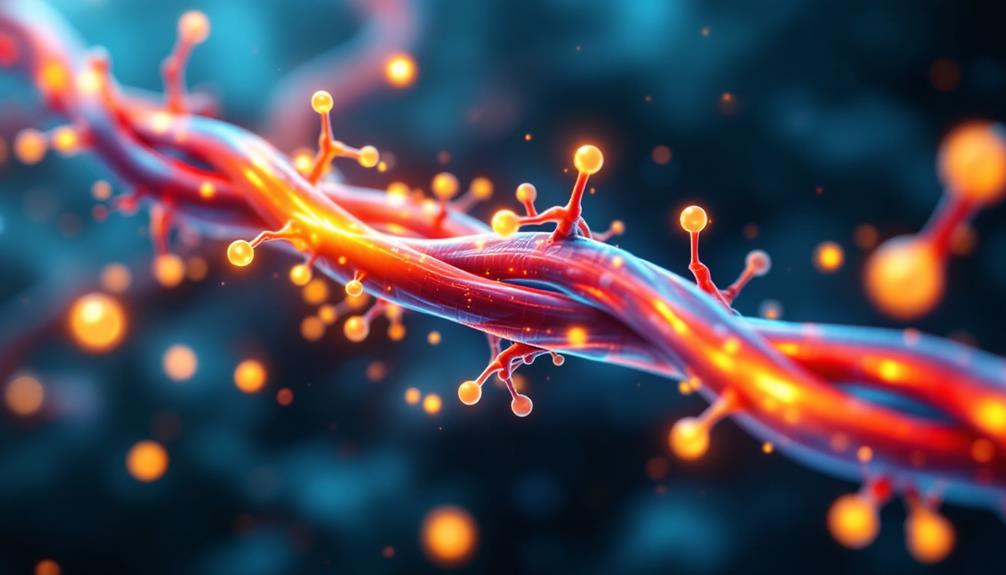
At the center of how our muscles work is adenosine triphosphate (ATP). This molecule is the energy source our muscles need to contract properly. When you decide to move, your body quickly breaks down ATP into adenosine diphosphate (ADP) and inorganic phosphate. This breakdown releases energy, which powers the interaction between actin and myosin, the proteins responsible for muscle contraction. To support ATP production and muscle function, it's important to stay hydrated and maintain a good balance of electrolytes. Taking electrolyte gummies can help replenish the minerals you lose during intense exercise.
ATP also plays a key role in muscle relaxation. After a muscle contracts, ATP helps move calcium ions back into the sarcoplasmic reticulum, which allows the muscle to relax. Without enough ATP, your muscles can tire out and struggle to contract effectively. Therefore, keeping your ATP levels up is crucial for optimal muscle function.
Nervous System's Influence on Muscles

The nervous system is crucial for how our muscles work. It sends signals that start and control muscle contractions. When you want to move, your brain sends electrical signals through the spinal cord and nerves to your muscles. Here's how it works:
- Signal Transmission: Nerve impulses quickly reach muscle fibers.
- Neurotransmitter Release: A chemical called acetylcholine is released at the connection between nerves and muscles.
- Muscle Activation: Acetylcholine binds to the muscle fibers, causing them to contract.
- Feedback Loop: Sensory receptors send information back to the nervous system to adjust movements as needed.
Good nutrition and supplements, like HMB, can help support muscle function and recovery. This may improve how well the nervous system helps muscles perform. Combining these supplements with a balanced diet can lead to better muscle strength and overall athletic performance.
Muscle Force and Movement Types

Muscle force is essential for our movement and is directly influenced by the nervous system. Different types of movements require different levels of muscle force, each with its own purpose. Here's a simple overview:
| Movement Type | Description |
|---|---|
| Isometric | Muscle contracts but doesn't change length. |
| Concentric | Muscle shortens while creating force. |
| Eccentric | Muscle lengthens while still under tension. |
| Agonist | The main muscle that causes the movement. |
| Antagonist | The opposing muscle that relaxes during movement. |
Factors Affecting Muscle Force
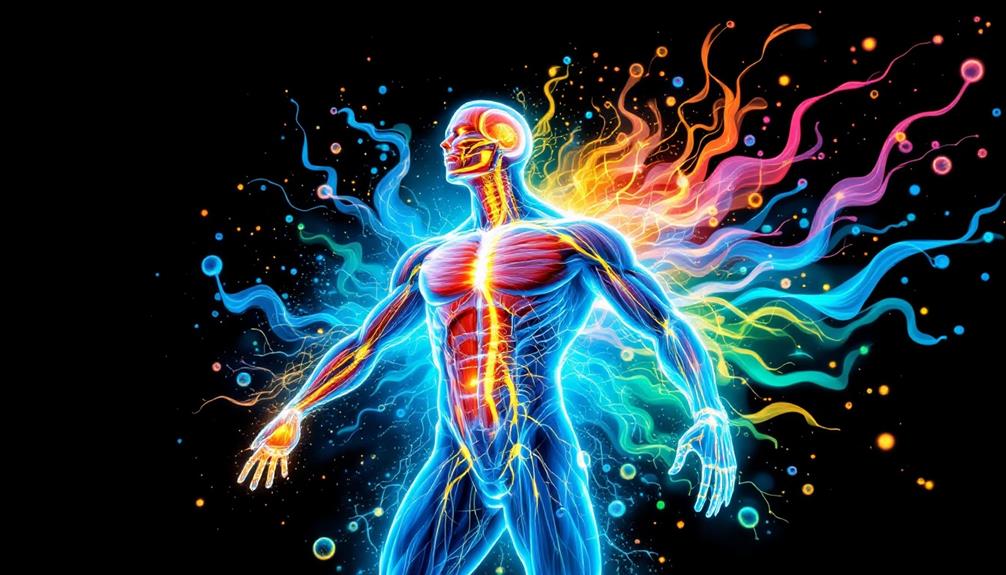
What affects how much force your muscles can produce? Several key factors play a big role. Knowing these can help you understand how your body works. While some people might think about using alternatives to anabolic steroids to boost muscle growth and strength, it's best to stick with natural methods and good nutrition for the best results.
- Muscle Size: Bigger muscles can produce more force because they have a larger area to work with.
- Muscle Fiber Type: Muscles have different types of fibers (like fast-twitch and slow-twitch) that have different strengths and endurance levels.
- Nervous System Activation: How quickly your brain sends signals to your muscles affects how much force they can generate.
- Length-Tension Relationship: Muscles work best at an optimal length. If they are too stretched or too contracted, they won't be as effective.
Training for Increased Muscle Force
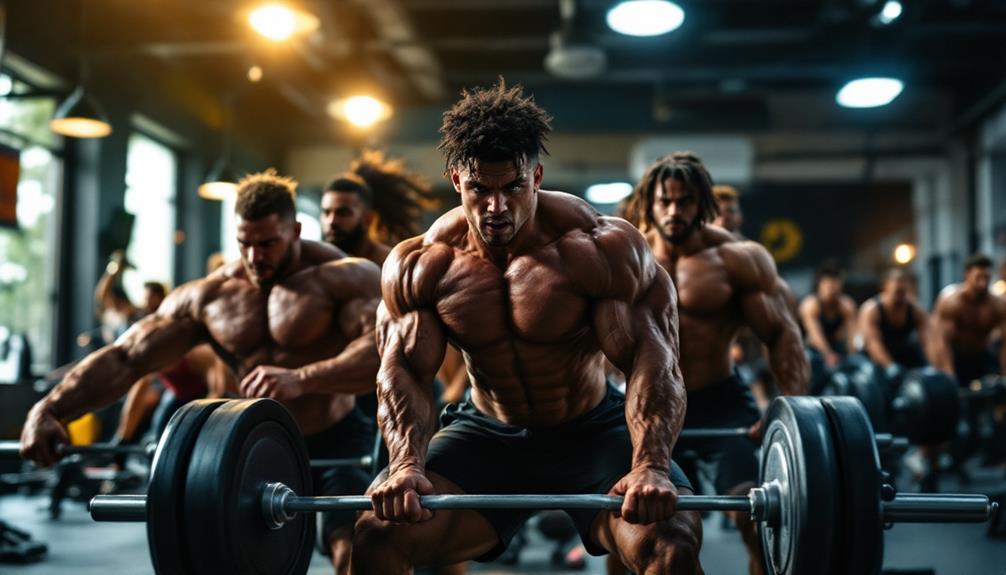
To increase muscle force, you'll want to follow a clear training plan that includes a mix of techniques. Start with resistance training. Focus on compound exercises like squats and deadlifts, which work multiple muscle groups at once. Use heavier weights and do fewer repetitions to help your muscles grow. Kettlebells can be a great addition to your workouts. They offer a variety of exercises that build strength and power.
Next, add some plyometric exercises, like box jumps. These help you develop explosive strength, allowing you to generate force quickly.
Remember to use progressive overload. This means gradually increasing the weight or intensity of your workouts over time.
Applications in Sports and Rehabilitation

In sports and rehabilitation, understanding muscle force is important for improving performance and recovery. Here's how you can use this knowledge:
- Improving Technique: By analyzing muscle force, you can refine your movements, making them more efficient in sports.
- Injury Prevention: Knowing how muscles work helps create personalized training plans, which can lower the chances of getting hurt during activities.
- Rehabilitation Protocols: This knowledge is useful for designing specific exercises that strengthen weak muscles, helping you recover faster. Natural detox supplements, like chlorella and spirulina, can also support recovery and muscle health during rehab.
- Performance Metrics: Measuring muscle force gives valuable information, helping athletes and trainers make better decisions about training programs.
Frequently Asked Questions
How Do Age and Gender Affect Muscle Force Production?
Isn't it amusing how age and gender play tricks on your muscle force? As you age, hormonal changes and muscle fibers shift, affecting strength. Men typically have more muscle mass, influencing force production naturally.
Can Nutrition Impact Muscle Force and Performance?
Your nutrition directly impacts muscle force and performance. Consuming the right balance of proteins, carbohydrates, and fats fuels your workouts, aids recovery, and enhances your overall strength, helping you achieve your fitness goals.
What Role Do Hormones Play in Muscle Force Generation?
When it comes to strength, hormones are like the invisible puppeteers, guiding your body's ability to generate power. They influence muscle growth, recovery, and overall performance, ensuring you get the most out of your training efforts.
How Does Hydration Influence Muscle Function and Force?
Hydration's important for your muscle function. When you're well-hydrated, your muscles contract efficiently, reducing the risk of cramps and enhancing performance. Dehydration can lead to fatigue and decreased strength, so drink enough water to stay at your best.
Are There Genetic Factors That Determine Muscle Force Potential?
Imagine your body as a finely tuned engine; genetics play a significant role in determining its horsepower. Yes, your genetic makeup influences muscle force potential, shaping how strong and powerful you can truly become.

